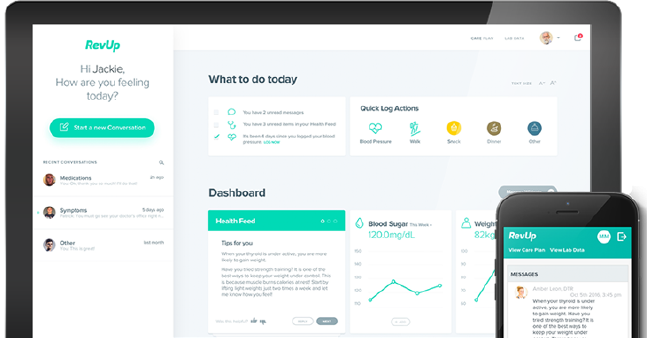Leading Remote Patient Monitoring Platform: Advanced Features and Advantages
Leading Remote Patient Monitoring Platform: Advanced Features and Advantages
Blog Article
The Future of Medical Care: Remote Client Keeping Track Of Streamlined
As healthcare continues to progress, one area that holds immense pledge is remote person monitoring. The concept of simplifying this procedure via technological innovations is reshaping the means treatment is supplied and received. With a focus on enhancing individual results and improving health care distribution, remote monitoring is poised to revolutionize the sector. By exploring the advantages, technical technologies, and future patterns in this area, we can get valuable insights into the transformative potential of remote client surveillance.
Benefits of Remote Client Surveillance
Remote patient surveillance presents a wide variety of advantages for both healthcare suppliers and individuals alike. Furthermore, remote patient tracking enhances the overall high quality of treatment by providing a much more thorough and all natural view of clients' wellness condition beyond standard in-person visits.
Additionally, remote patient monitoring can result in enhanced person end results and complete satisfaction. Individuals can enjoy the ease of obtaining care in the comfort of their very own homes while still understanding that their health and wellness is being very closely kept track of. This can cause boosted patient involvement and adherence to therapy plans, eventually causing much better wellness results. Additionally, remote monitoring can lower the demand for frequent healthcare facility sees, reducing healthcare prices for both clients and companies. On the whole, the advantages of remote individual surveillance are clear, making it a valuable device in modern-day health care distribution.
Innovation Driving Remote Tracking
In the world of modern health care, technological improvements play a pivotal function in driving the advancement and efficiency of remote client surveillance. The combination of innovative innovations such as wearable gadgets, mobile applications, and cloud-based systems has transformed the means doctor remotely handle and check individual health and wellness - remote patient monitoring platform. These modern technologies make it possible for constant real-time monitoring of essential indications, medication adherence, and various other vital wellness data, permitting timely treatments and personalized treatment plans
One key innovation driving remote surveillance is the Internet of Things (IoT), which makes it possible for smooth connectivity in between clinical tools and medical care systems. IoT devices such as smartwatches and wireless sensing units transfer and collect client information to centralized platforms, helping with remote surveillance from anywhere in the world. Expert system (AI) and artificial intelligence algorithms better enhance remote tracking by evaluating substantial quantities of patient information to identify patterns, anticipate wellness fads, and sharp doctor to prospective issues.
Influence On Health Care Shipment
With the combination of innovative innovations driving remote patient tracking, the effect on medical care distribution is ending up being transformative and progressively profound. Remote individual monitoring allows doctor to provide even more customized and proactive like patients, causing enhanced wellness outcomes and minimized healthcare news facility admissions. By remotely tracking crucial indications, signs, and medication adherence, healthcare experts can step in early, protecting against difficulties and enhancing the general top quality of care.
In addition, remote surveillance boosts access to health care solutions, particularly for individuals in underserved or country areas. Clients can obtain constant monitoring and assistance from their homes, eliminating the requirement for frequent in-person visits. This not just conserves time and lowers prices for both people and medical care centers but additionally lessens the risk of exposure to transmittable illness, an important factor to consider in the present healthcare landscape.
In addition, remote person tracking allows doctor to much better focus on and assign resources care based on real-time information. By identifying high-risk individuals and interfering without delay, healthcare delivery becomes more efficient and reliable, ultimately bring about a much more lasting and patient-centered healthcare system.
Improving Patient Results

Additionally, RPM permits for proactive management of chronic conditions, decreasing the likelihood of severe exacerbations and healthcare facility readmissions. Clients profit from increased comfort and convenience, as they can receive care in their very own homes while staying connected to their doctor. This continual tracking not only boosts person satisfaction yet likewise cultivates a feeling of empowerment and interaction in their own wellness administration.
Future Trends in Remote Monitoring
Accepting sophisticated technologies in remote person surveillance is shaping the future landscape of health care shipment. One significant pattern is the raised use of wearable devices and sensors to collect real-time information, allowing medical care suppliers to keep an eye on patients continually without the requirement for frequent in-person sees.

In addition, telehealth systems are coming to be more innovative, permitting virtual examinations, remote medical click here to read diagnosis, and remote individual monitoring done in one incorporated system (rpm software). This holistic method to remote tracking is streamlining health care shipment, enhancing patient satisfaction, and eventually, enhancing total quality of care
Conclusion
In verdict, remote client tracking provides many benefits in healthcare delivery, driven by innovations in technology. It has the potential to boost client results and revolutionize the means healthcare is provided. Future trends in remote monitoring will certainly remain to shape the landscape of medical care, providing chances for more effective and individualized person treatment.
Remote client tracking presents a wide variety of advantages for both medical care companies and patients alike. Furthermore, remote client tracking boosts the general top quality of treatment by supplying a more extensive and all natural view of people' health and wellness standing past typical in-person brows through.
Moreover, remote individual monitoring can lead to improved client outcomes and contentment. Remote individual tracking permits healthcare companies to supply even more tailored and proactive care to clients, leading to boosted wellness end results and lowered hospital admissions. Remote person tracking (RPM) plays a significant function in enhancing patient outcomes by supplying continuous, real-time data that allows health care carriers to intervene promptly and adjust treatment strategies as required.
Report this page